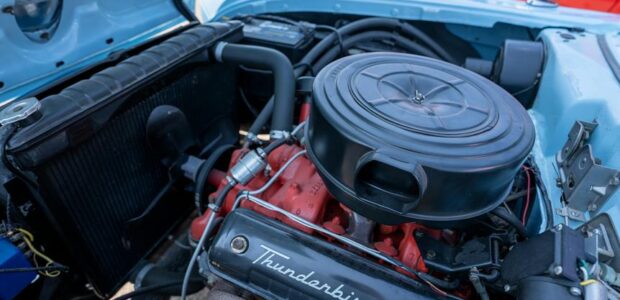
Curious about the last 3 on the tree column shift manual car for Americans? The Ford F100 from the late 1980s stands out as a rugged and reliable choice. This truck offered a 3-speed manual transmission with a column shifter, providing a strong connection to the driving experience. Perfect for hauling and towing, its robust design and straightforward mechanics appealed to those valuing simplicity behind the wheel. If you're intrigued by this historical gem of automotive engineering, the Ford F100 represents a significant chapter in the evolution of manual vehicles. If you’re considering the Ford F100, it’s worth noting that it’s a far cry from the luxurious and high-performance vehicles of today. However, its straightforward nature and rugged reliability offer a unique appeal for enthusiasts of classic vehicles. And if you’re interested in exploring its capabilities, you can easily calculate your Lamborghini payment online to see how it compares to the practicality and simplicity of the Ford F100.
Ford XF Falcon
The Ford XF Falcon, a notable last-generation column-shift manual vehicle, holds a special place in automotive history.
Introduced in 1984, the XF Falcon was part of the sixth generation of the Ford Falcon range produced in Australia. This sedan featured a 3-speed manual transmission with the gear shifter located on the steering column, known as the "3 on the tree" setup, a design that was becoming increasingly rare.
The XF Falcon was praised for its durability and spacious interior, making it a popular choice for families and fleet vehicles.
Despite its simplistic transmission system, the XF Falcon offered a smooth driving experience, showcasing the charm of traditional column-shift manual cars.
1986 Ford F100
Arriving as a remarkable addition to the lineup of last-generation column-shift manual vehicles is the 1986 Ford F100.
The Ford F100 was a rugged and reliable truck that catered to those seeking a durable workhorse. With its 3 on the tree column shift manual transmission, this truck provided a unique driving experience that connected you directly to the road.
The manual column shifter allowed for precise control over gear changes, making it ideal for hauling and towing tasks.
The Ford F100's robust design and straightforward mechanics made it a popular choice among drivers who valued simplicity and functionality in their vehicles.
Mercedes-Benz W124 E-Class Taxi
With a reputation for durability and reliability, the Mercedes-Benz W124 E-Class Taxi stands out as a notable example of last-generation column-shift manual vehicles.
This iconic taxi model was a common sight on the streets, known for its robust build and smooth handling.
Here are five intriguing facts about the Mercedes-Benz W124 E-Class Taxi:
- The W124 E-Class Taxi was a popular choice for taxi companies due to its spacious interior and comfortable ride.
- Its column-shift manual transmission allowed for seamless gear changes, ideal for city driving.
- The W124 E-Class Taxi featured a reliable diesel engine known for its longevity and fuel efficiency.
- Despite being primarily used as taxis, some enthusiasts have restored these vehicles for personal use.
- The W124 E-Class Taxi showcases Mercedes-Benz's commitment to quality craftsmanship and timeless design.
Frequently Asked Questions
How Did the Transition From Column Shifters to Floor Shifters Impact Vehicle Design?
Shifting from column to floor shifters revolutionized vehicle design by enhancing driver control and comfort. Improved ergonomics and the ability to accommodate more gears boosted performance. This shift reflected evolving driver preferences for a smoother driving experience.
What Factors Contributed to the Decline of Column Shift Manual Cars in the US?
Factors contributing to the decline of column shift manual cars in the US include the shift to more speeds and better control with floor shifters, reduced maintenance costs, and the steeper learning curve for new drivers.
Are There Any Modern Vehicles That Still Offer Column Shift Manual Transmissions?
Modern vehicles no longer offer column shift manual transmissions due to advancements favoring floor shifters for improved control and driver comfort. This change aligns with the trend towards more gears (5-6 speeds) and manual transmission designs.
What Are the Key Differences Between American and European Preferences for Manual Transmissions?
American drivers tend to prefer manual transmissions in sports and performance cars for enhanced control. Europeans, meanwhile, favor manuals for fuel efficiency and cost savings in daily driving. Both regions appreciate the engagement and connection that manual transmissions offer.
How Did Advancements in Technology Influence the Evolution of Manual Transmission Systems?
Advancements in technology transformed manual transmissions, shifting from column to floor shifters with 5-6 speeds for enhanced control. Drivers benefitted from reduced maintenance costs and improved gear shifting. Learning curves and hill management posed challenges.
